Marine Carbon Dioxide Removal Resources
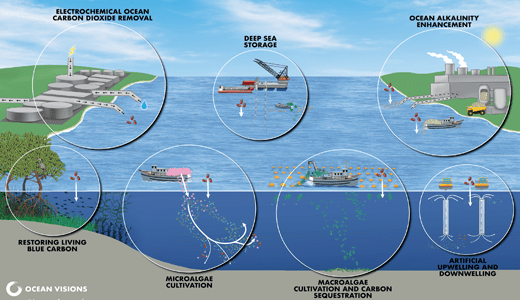
Illustrations
Ocean Visions is pleased to make available for broad public use a collection of illustrations depicting marine carbon dioxide removal pathways, including electrochemical ocean capture, deep sea storage, ocean alkalinity enhancement, blue carbon restoration and carbon sequestration, macroalgae cultivation and carbon sequestration, microalgae cultivation, and artificial upwelling & downwelling. We invite you to download the collection and utilize it as part of your communication efforts.
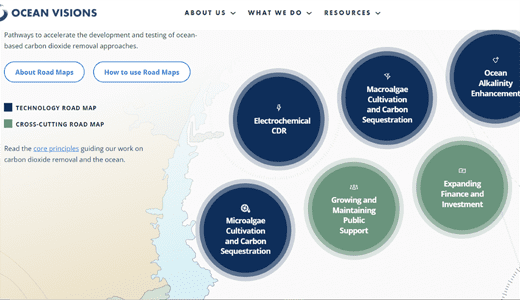
Road Maps
Ocean Visions worked with experts from around the globe to develop interactive road maps that identify key actions needed to advance our collective knowledge of ocean-based carbon dioxide removal pathways and determine what role, if any, each may ultimately play in addressing the climate crisis.
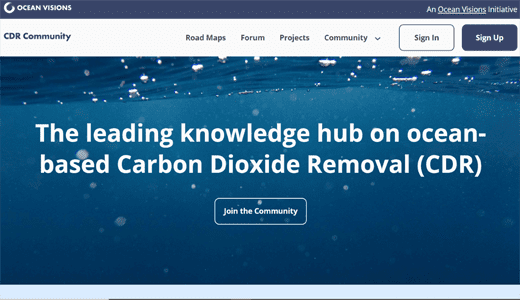
Ocean-Based CDR Community
The leading knowledge hub on ocean-based carbon dioxide removal, the Ocean-Based CDR Community brings together all stakeholders to advance the state of knowledge, build bridges across disciplines, and help the community move towards testing and piloting the most promising ocean-based carbon dioxide removal approaches.
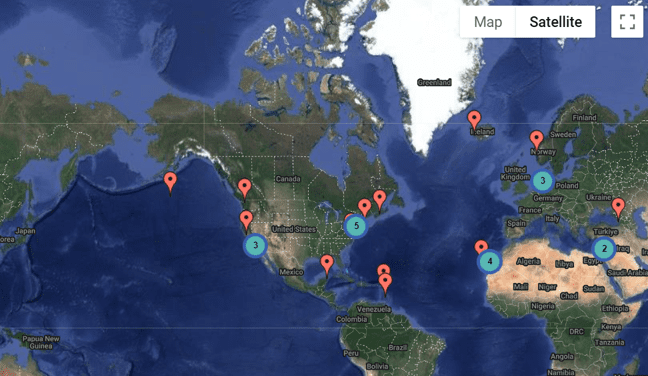
mCDR Field Trial Database
A growing number of field trials performed by research institutions, startups, and others are being conducted in a variety of locations. To increase awareness of the state of development and improve knowledge-sharing across the ocean-climate community, Ocean Visions has built a database of all known field trials. The tool includes information on the different mCDR pathways being tested, details of carbon dioxide sequestration, MRV strategy, and lessons learned from the trials.
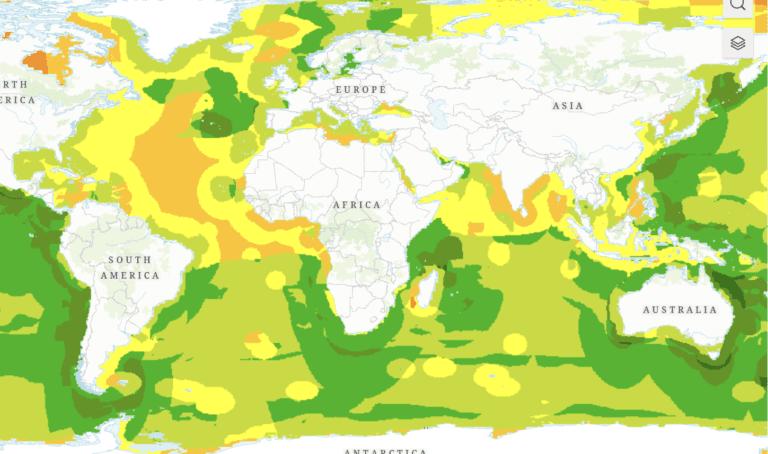
Ocean Iron Fertilization Site Suitability Planning Tool
Ocean Visions and Esri have collaborated to create a first-of-its-kind Ocean Iron Fertilization Site Suitability Planning Tool. The tool supports the selection of locations for field trials designed to help evaluate the effectiveness and safety of ocean iron fertilization as a possible marine carbon removal method.

Sinking Seaweed Report & Funding Tool
Created with partner MBARI, Ocean Visions’ Research Framework provides a map for the design of needed field trials to evaluate the effects of seaweed sinking programs at relevant scales. Serving as a companion to this report is an interactive database of funding opportunities for researchers seeking to advance these identified priorities.
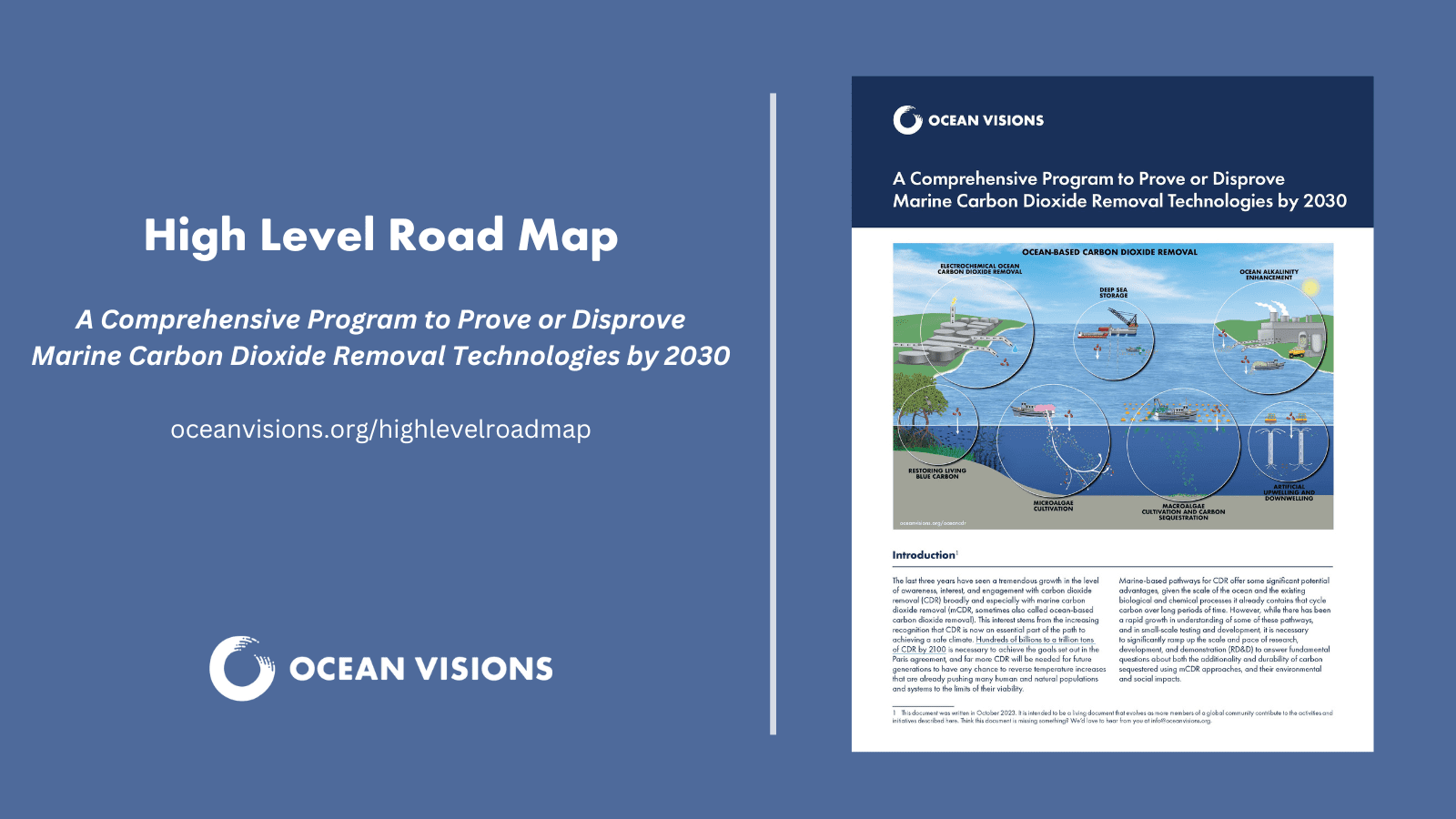
A Comprehensive Program to Prove or Disprove Marine Carbon Dioxide Removal Technologies by 2030
There has been a great deal of debate about the potential contributions of marine carbon removal techniques to help blunt the ocean-climate crisis, but discussions are occurring in an environment of very limited field data. Our road map outlines a comprehensive programt to answer fundamental questions around additionality, durability, safety, costs, and social acceptability of each approach.
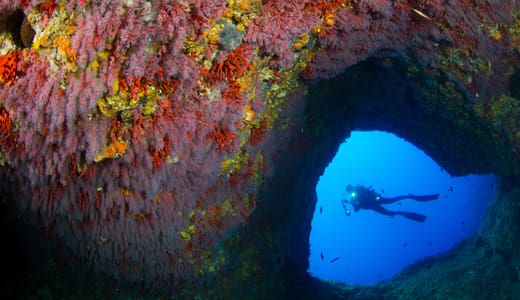
Ocean Solutions Expert Network Sign-Up
We're building a curated database from which we can draw to recruit experts to engage in the development, evaluation, and testing of potential ocean solutions. Interested? Please sign up to be considered.
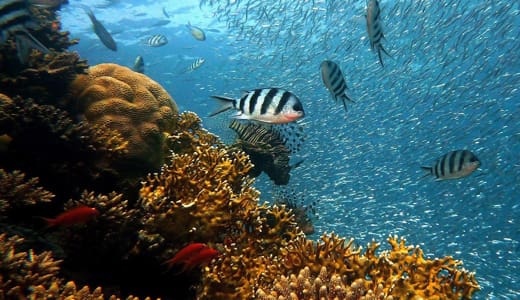
Message Guide
Ocean-based carbon dioxide removal may have an important role to play in stabilizing the climate and restoring ocean health, but investments in research and development are lagging. Ocean Visions conducted audience research and developed a message guide for stakeholders working to advance ocean-based climate solutions.
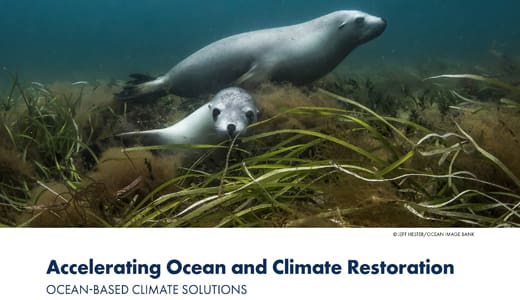
Factsheet
What is ocean-based carbon dioxide removal (CDR)? Get an overview in our ocean-based CDR factsheet.

Video
How might we harness the natural power of the ocean to help restore the climate and the ocean itself?
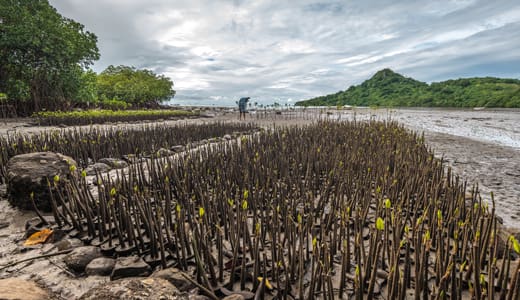
Image Resources
Looking for free ocean and climate images? Sources to explore include: Pexels, Unsplash, pixabay, Ocean Image Bank, NOAA Imagery, and Climate Visuals.

Principles Guiding Our Work
Ocean Visions is committed to accelerating research, development and testing of ocean-based technologies that might safely draw down and sequester carbon dioxide – commonly referred to as ocean-based carbon dioxide removal. Our work is predicated on, and guided by, core principles.